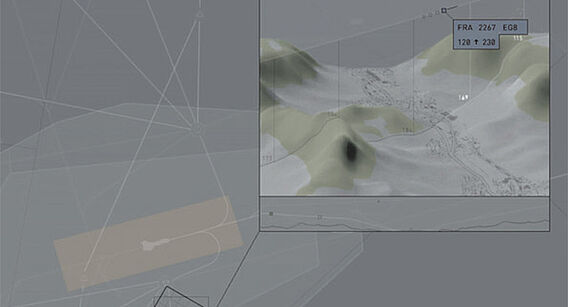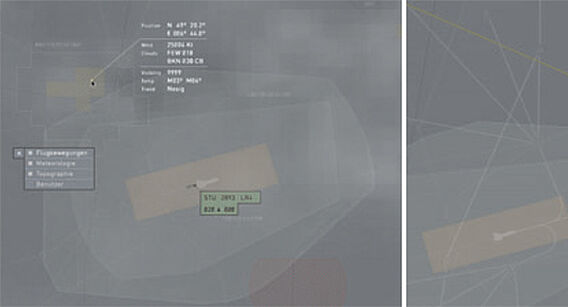ATANA-Flugraumsicherung – user interface for radar screens in control towers
The project was developed because flight traffic lacked adequate technical coordination, both on the ground and in the air. Human and technical failure – resulting in part from the increasing strain on airspace – pose a threat to the safety of passengers and flight crews as well as to the lives and health of the population on the ground due to the potential risk of planes crashing down on inhabited areas.
ATANA-Flugraumsicherung (flight space protection) optimizes the interfaces of monitors used by air traffic controllers in towers. The project consists of an updated technological approach and of one that enables a view into the near future. The second component of the work shows how radar screens can be operated not as controlling instruments but rather as elements for interaction, integrated into ergonomic workplaces that are aligned with system processes.
The design is focused on the monitor’s visibility: the information to be retrieved is displayed in a creative manner to make judicious interaction possible. After a thorough analysis of existing systems, a series of tests was created to examine the design being developed. The results of these tests supported the development processes of the innovative approach. As opposed to current systems, through the use of design elements ATANA makes it possible to display information faster and in a more clearly structured manner. The system directs the flight controller’s eye to the information currently relevant, preventing rapid fatigue. Information that currently is displayed on external monitors, for example, meteorological data, is integrated through digital data transmission. This reduces the need for radio traffic and, thus, minimizes communication problems.
In comparison to traditional systems that are used merely as controlling instruments, ATANA’s interactive user interface offers options for better coordination and faster reaction to potential risks. The zoom window, which can be adjusted flexibly, even shows details that may not be required for handling daily air traffic but could come in handy in certain situations.

